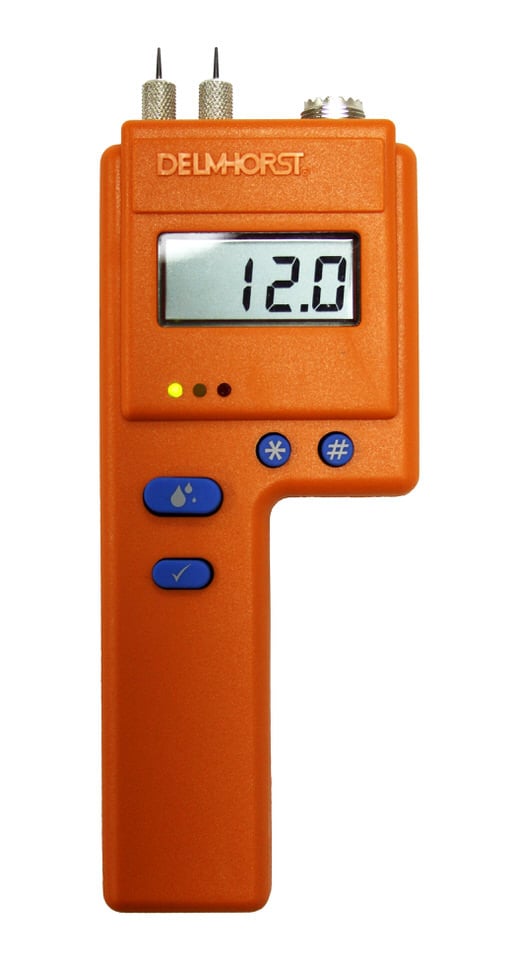Just How a Moisture Meter Can Improve Your Building And Construction Tasks and Stop Damages
Just How a Moisture Meter Can Improve Your Building And Construction Tasks and Stop Damages
Blog Article
Look Into the World of Moisture Meters: Everything You Required to Know
In the world of moisture meters lies a globe of accuracy and functionality that frequently goes undetected. These tools, while relatively straightforward, hold a wealth of details that can substantially affect various markets and applications. Understanding just how moisture meters run, the different kinds available, and their varied usages can shed light on their importance in making certain top quality and effectiveness. By exploring the details of dampness meters, one can uncover a valuable tool that goes beyond simple measurement, supplying insights that can make a significant difference in countless fields.
Just How Moisture Meters Work
Moisture meters operate by gauging the electrical conductivity or capacitance of materials to establish the moisture material existing. These meters are indispensable devices across different sectors, including woodworking, building, and farming. By using various approaches such as pin-type or pinless innovation, dampness meters give accurate readings that assist specialists make informed decisions.
Pin-type moisture meters work by inserting the sharp pins into the material being examined. On the other hand, pinless wetness meters use electromagnetic signals to check a bigger area without causing any kind of damage to the material's surface area.
Regardless of the approach made use of, wetness meters play an important function in stopping problems such as mold development, structural damages, or product problems triggered by excess moisture. Recognizing how these meters job is vital for guaranteeing the quality and honesty of materials in numerous applications.
Sorts Of Moisture Meters
Given the essential function moisture meters play in different industries, it is necessary to comprehend the different kinds available to specialists for accurately analyzing wetness degrees - Moisture Meter. There are mainly 2 main sorts of moisture meters: pinless and pin-type moisture meters

On the other hand, pinless moisture meters utilize electromagnetic sensing unit plates to scan a larger location of the product without causing any damages. This kind is appropriate for rapidly scanning big areas and is commonly made use of for floor covering, wall surfaces, and ceilings. Pinless meters are convenient for taking analyses on finished surfaces without leaving any noticeable marks.
Both kinds of dampness meters have their advantages and are picked based on the details demands of the work available. Understanding the differences in between these types is crucial for specialists to make precise dampness evaluations.
Applications Across Industries
Building and construction experts rely on wetness meters to assess the wetness degrees in building products like drywall, timber, and concrete, which is critical for preserving architectural integrity and stopping issues like rot or mold. The floor covering industry makes use of moisture meters to determine the dampness content in subfloors before mounting various floor treatments, preventing costly problems due to excess dampness. In the food industry, wetness meters are made use of to monitor and manage moisture degrees in items such as grains, nuts, and dried fruits to maintain quality and quality.
Tips for Utilizing Wetness Meters
When gauging the wetness content in different materials,Use the wetness meter's calibration setups to make certain exact analyses. Calibration is critical for the proper functioning of a wetness meter. Before each use, it is a good idea to inspect and readjust the calibration setups according to the details product being examined. In addition, make certain the meter is set to the correct moisture range for the material you are measuring to obtain one of the most precise outcomes.
When making use of a pin-type dampness meter, place the pins to the suitable depth advised for the product being evaluated. This ensures that the moisture analyses are drawn from the appropriate depth within the product, supplying a more exact depiction of its wetness content. For pinless dampness meters, bear in mind to maintain correct contact with the product's surface area to get reputable readings.
On a regular basis check and change the batteries in your check moisture meter to avoid unreliable readings because of low power. When not in usage to prolong its life expectancy and keep its accuracy, Store the meter in a secure and completely dry area. By following these pointers, you can make the most of the performance of your wetness meter and obtain precise wetness content dimensions throughout different products.
Maintenance and Calibration
To make sure the accuracy of dampness content dimensions, routine maintenance and calibration of the dampness meter are crucial action in its correct performance. Maintenance includes maintaining the dampness meter clean and complimentary from debris that can affect its readings. It is essential to follow the manufacturer's guidelines for cleaning up to prevent damages to the gadget. Additionally, regular calibration is needed to validate the precision of the readings. Calibration changes the dampness meter to ensure that it offers dependable and constant outcomes.
Calibration should be executed regularly, particularly if the wetness meter is used frequently or in vital applications where specific measurements are needed. Many moisture meters come with calibration devices or can be calibrated by specialist services. Moisture Meter. It is advised to keep a log of calibration dates and results to track the efficiency of the dampness meter over time. By keeping and calibrating the dampness meter regularly, customers can rely on the accuracy of the dampness web content dimensions obtained.
Final Thought

In conclusion, wetness meters play an essential function in various industries by precisely determining the moisture Visit Your URL content of materials. Comprehending how these gadgets function, the various kinds readily available, and proper maintenance and calibration are essential for obtaining reputable results. Whether in farming, production, or building and construction, the usage of dampness meters aids make certain quality assurance and effectiveness in procedures.

In final thought, dampness meters play a crucial function in numerous markets by precisely determining the dampness web content of products.
Report this page